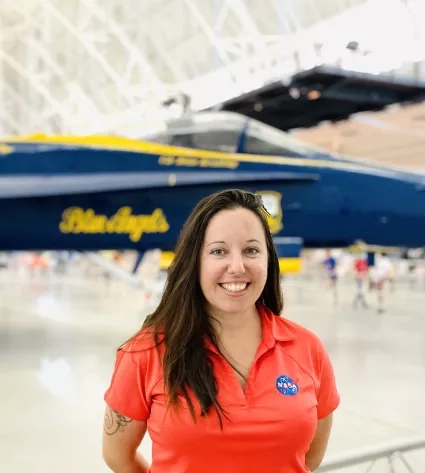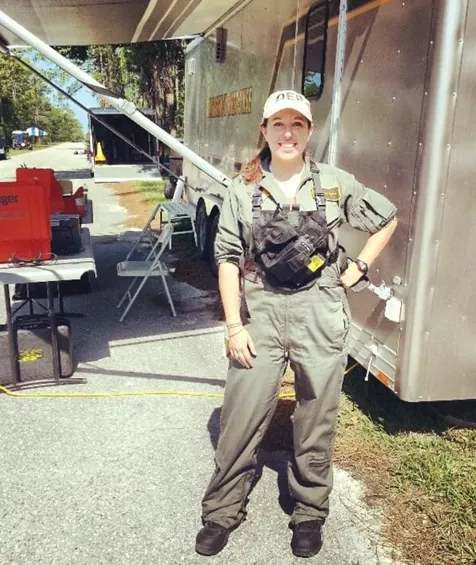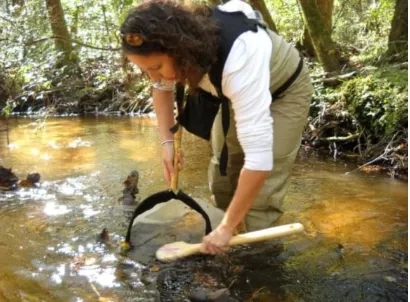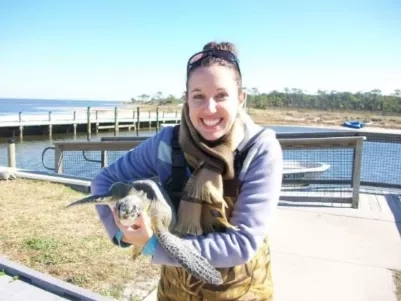“Hey! We’re going up in five minutes!”
Jennifer Paris grabbed her colleague and climbed into the helicopter. As the aircraft went up, she watched below as one of the largest oceanic oil spills in history made its way through the Gulf of Mexico, leaving 4 million gallons of crude oil behind. It was up to Paris to represent the State of Florida’s Department of Environmental Protection. As part of “Team Florida,” she, along with a NOAA scientist, a National Parks Ranger, and a representative from the responsible party, made an initial operational game plan for how field teams would categorize and track oil as it washed ashore.
And this was only her fourth month as an emergency response manager.
Over a decade later, she can’t quite recall what she saw out of the helicopter window. The adrenaline of being so high up, combined with the pressure of being the youngest person and first woman to serve in her role, left her memory a bit hazy. But one thing is for certain: Paris learned to persevere in situations where others may falter. “I’ve always looked younger than I am, and mostly been in a male-dominated type of career,” she explained. “However, I’ve never let challenges divert me from the ability to be impactful, and it has never affected my drive.”
Despite her success in emergency response, Paris originally dreamed of being a marine biologist. She was raised in a two-stoplight, rural town where her first love for the ocean began after watching Disney’s “The Little Mermaid” and Jacques Cousteau’s documentaries. After graduating high school, she attended the University of West Florida to pursue her interest in marine biology and environmental science. She accepted a part-time position with the Florida Department of Environmental Protection (FDEP) as a sophomore. She didn’t know it at the time, but earning her bachelor’s degree in Marine Biology and minor in Environmental Science would lead her to a full-time position with FDEP, and eventually pave the way toward a career in emergency response.
Paris’ career with the FDEP spanned an impressive 14 years, but she still found time to follow her passion for wildlife conservation. Working as a volunteer, she would hop on an ATV before the sun rose and search for turtle nests. “I would love the ability to coordinate with, or work in, another position like that again – whether it’s volunteering for wildlife rescues or getting back into coastal and marine conservation efforts.”
Paris first joined NASA as a contractor in 2016 with the NASA Headquarters Emergency Management team. Here, Paris was an emergency planner, a trainer for the emergency preparedness and facility Building Monitor programs, as well as an Incident Command System Instructor for the Agency. In addition, she was asked to represent NASA Headquarters on the Mars 2020 Rover Radiological Contingency Planning Team. Recently, Paris discovered that this team was selected for the prestigious NASA Silver Group Achievement Award for their work with the Mars 2020 mission. The Mars 2020 mission included launching the Mars rover ‘Perseverance’ – a common theme in Paris’ career. “Perseverance is an important word to me, as much of my career I’ve had to persevere and be resilient to what life throws at me.” She described receiving this award as a full-circle moment in her career.
Later in 2020, she landed her current role as a disaster management coordinator for the NASA Disasters Program area. When disasters strike, Paris makes every effort to connect the right people to one another. “My favorite part about any job is collaboration. I’m no expert, but I love bringing the right people to the table that can help get things done.” She’s provided support and facilitated connections for the California oil spill in 2021, the Tonga volcanic eruption this past February, and many more disasters over her professional career and involvement with various Incident Management Teams and non-profit organizations. Although disaster relief can be devastating, she believes there is a silver-lining to the work. “Despite the tragedy of disasters, I’ve seen firsthand how communities rebuild with resiliency, and that is the best part of any response.”
In the future, Paris would like to find more ways to tie environmental mitigation, restoration, and conservation efforts into disaster response, as natural hazards harm communities and the surrounding environment. “Accepting this position in Disasters re-energized my passion for protection and preservation of Earth’s ecosystems and biodiversity, its wildlife, and for the humans that co-populate it,” she said. “I really see this position as an opportunity to bring awareness of how emergency management principles can be applied during environmental disasters, and in concert with research and applications to communities in need.” Whether she’s riding in a helicopter or monitoring global disasters, Jennifer Paris is always ready to spring into action and help others.







